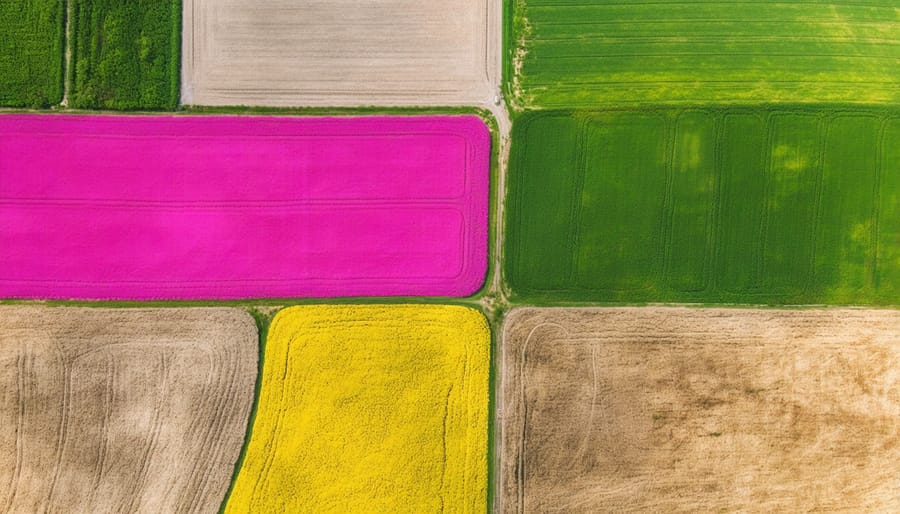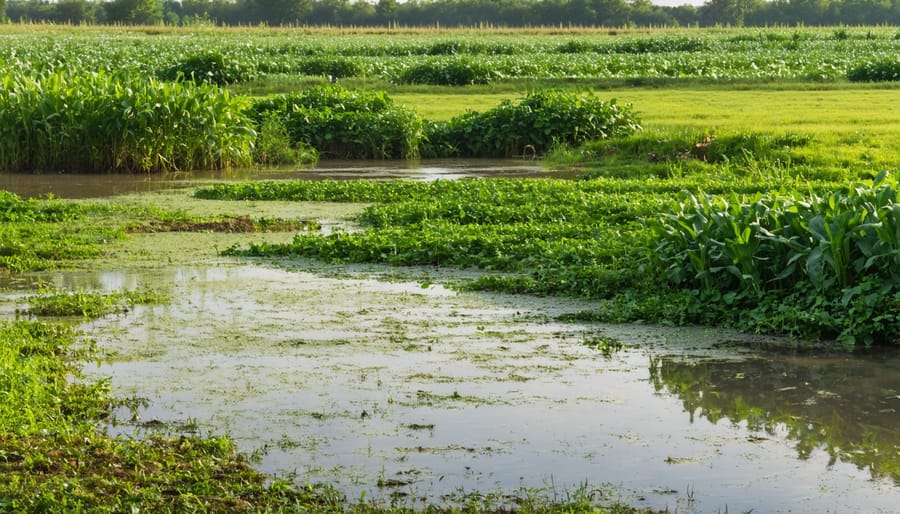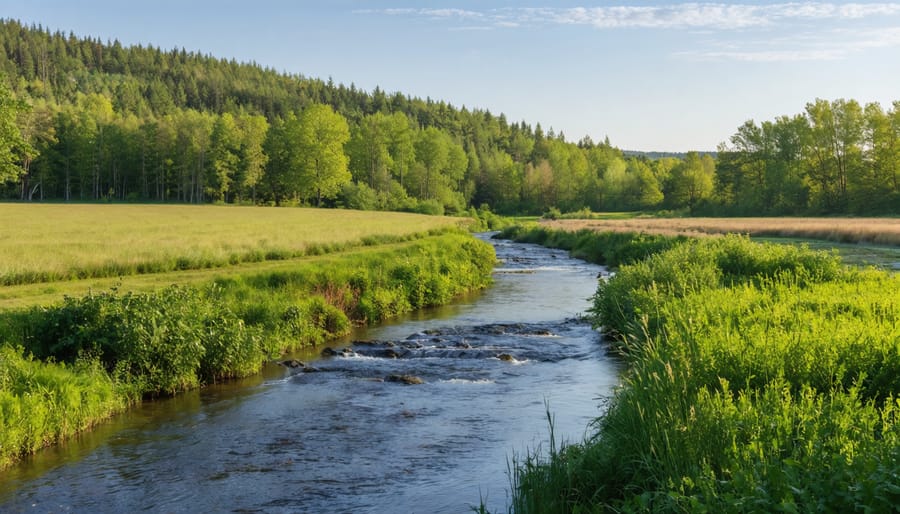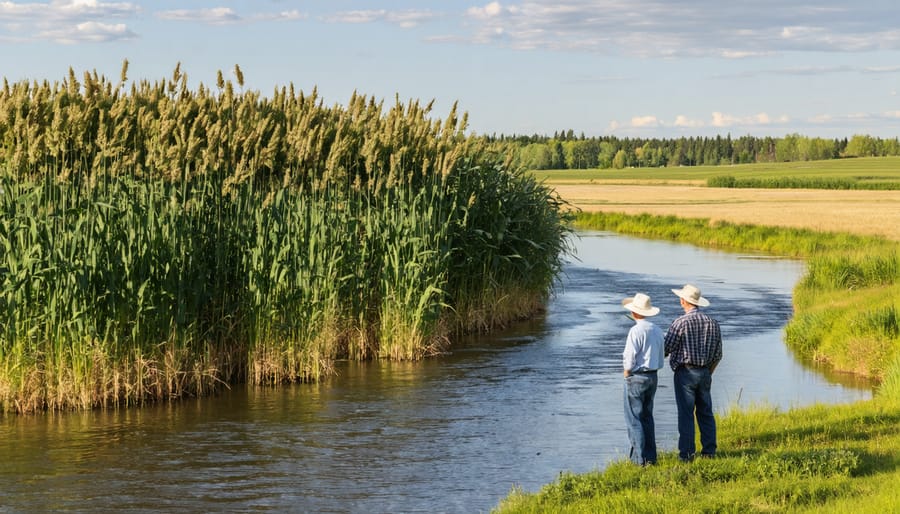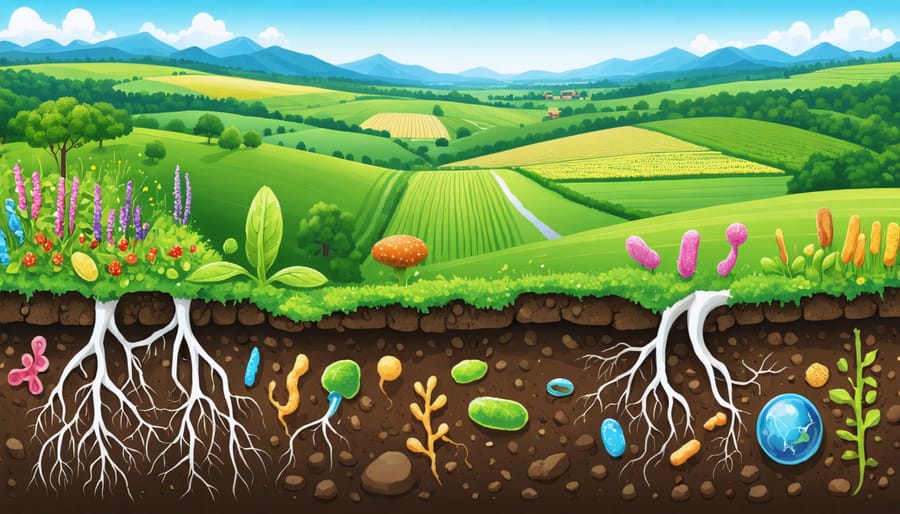Transform your schoolyard into a living laboratory where students harvest knowledge alongside fresh produce in an edible ecosystem teaching garden. These innovative outdoor classrooms blend traditional agricultural wisdom with hands-on science education, creating dynamic spaces where ecology, nutrition, and sustainable food production converge.
Across Alberta’s diverse growing zones, from urban Calgary courtyards to rural Peace Country plots, edible ecosystem gardens are revolutionizing how we teach environmental stewardship and food security. By integrating native plants with cultivated crops, these gardens demonstrate practical permaculture principles while providing students authentic connections to their local food systems.
Beyond merely growing food, these educational spaces serve as microcosms of larger ecological systems, teaching crucial lessons about biodiversity, soil health, and climate resilience. Students learn to observe natural patterns, understand plant relationships, and develop practical skills that connect classroom concepts to real-world sustainability challenges. As communities across Canada seek solutions for environmental education and food literacy, edible ecosystem teaching gardens offer a proven model for nurturing both future harvests and future stewards of the land.
Building Your Edible Ecosystem: The Alberta Advantage
Site Selection and Climate Considerations
Selecting the right location for your edible ecosystem teaching garden is crucial for its success in Alberta’s diverse climate zones. Start by assessing your site’s sun exposure – most edible plants require at least 6-8 hours of direct sunlight daily. In our northern latitude, south-facing slopes offer optimal growing conditions and natural frost protection.
Consider your soil composition and drainage patterns. Alberta’s soils vary significantly, from rich black chernozems to heavy clay. Conduct soil tests to understand your starting point and plan amendments accordingly. Good drainage is essential, as waterlogged soil can damage root systems, particularly during spring thaw.
Wind protection is another critical factor in our prairie environment. Natural windbreaks or strategic fencing can help create beneficial microclimates and protect delicate plants. Consider existing structures and mature trees that might provide shelter while planning your garden layout.
Our climate presents unique challenges with late spring frosts and early fall freezes. Monitor local weather patterns and frost dates to inform your planting schedule. Installing season extenders like row covers or cold frames can help protect sensitive plants and extend your growing season by several weeks.
Water accessibility is essential – position your garden near a reliable water source while ensuring proper slope for drainage. Remember that different zones within your garden will have varying moisture needs, so plan your irrigation strategy accordingly.
Finally, consider the educational aspect when choosing your site. Ensure the space is accessible for groups and includes areas for seating and instruction.
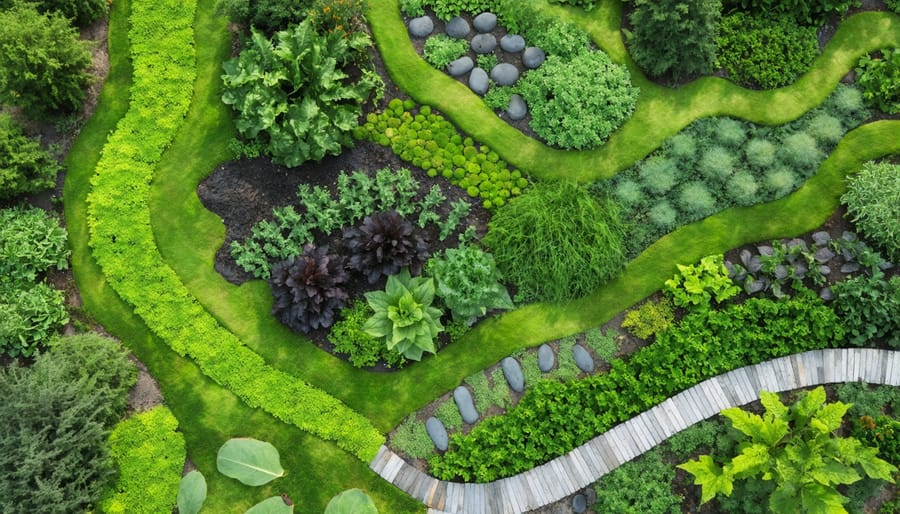
Native Plants That Pay Their Way
Alberta’s native plants offer both ecological and economic benefits when incorporated into edible teaching gardens. By following traditional indigenous agricultural practices, farmers can cultivate profitable species while supporting local biodiversity.
Saskatoon berries, with their sweet-almond flavor, command premium prices at farmers’ markets and are naturally adapted to our climate. These hardy shrubs provide essential food for pollinators and birds while producing reliable annual yields of 3-5 kg per mature plant.
Wild mint and yarrow offer dual income streams through fresh sales and value-added products like teas and essential oils. These plants naturally control pests and attract beneficial insects, reducing the need for external inputs.
High-bush cranberries and chokecherries create excellent preserves and syrups while providing crucial wildlife habitat. One mature cranberry bush can yield up to 4 kg of berries annually, with minimal maintenance requirements.
Prairie turnips and Jerusalem artichokes represent hardy root crops that thrive in Alberta’s soil conditions. These perennial vegetables require little irrigation and improve soil structure through their extensive root systems.
By incorporating these native species, gardens can generate income while supporting ecosystem services like pollination, soil health, and wildlife habitat. Many of these plants also carry cultural significance, adding educational value to teaching gardens while preserving traditional knowledge.
Ecosystem Services That Boost Farm Productivity
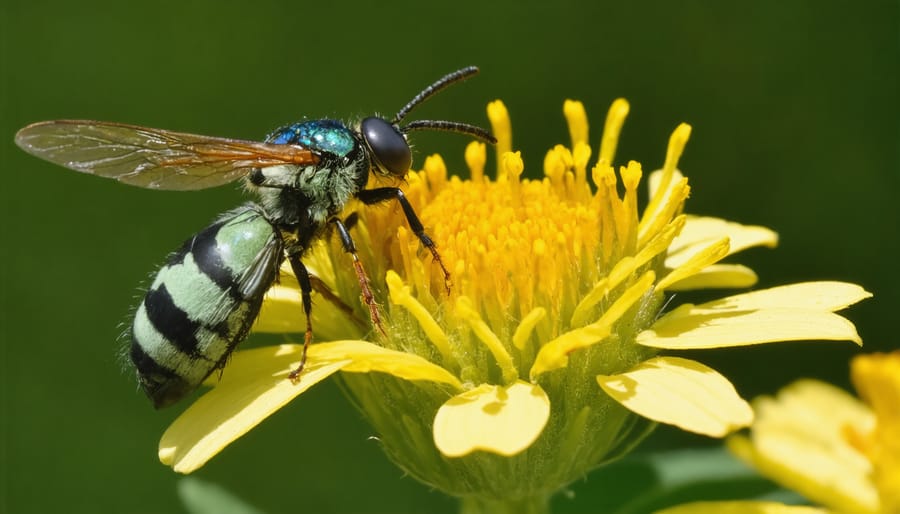
Natural Pest Control Systems
Natural pest management in an edible ecosystem teaching garden relies heavily on working with nature rather than against it. By incorporating beneficial pollinators and predatory insects, gardens can maintain a healthy balance without chemical interventions. Ladybugs, ground beetles, and parasitic wasps serve as natural pest control agents, effectively managing common garden pests like aphids and caterpillars.
Companion planting plays a crucial role in this system. For example, planting marigolds alongside tomatoes helps repel nematodes, while nasturtiums act as trap crops for aphids, protecting nearby vegetables. In Alberta’s climate, combining dill and carrots has proven particularly effective, as the dill attracts beneficial wasps that control carrot rust fly populations.
The teaching garden demonstrates these relationships through strategic plant placement and habitat creation. Simple additions like insect hotels, native flowering plants, and shallow water sources encourage beneficial insects to establish permanent populations. These features serve both educational and practical purposes, showing students and visitors how natural ecosystems function while actively protecting garden crops.
Cost savings are significant when compared to conventional pest management methods. Many Alberta gardeners report reducing or eliminating pesticide use entirely within two growing seasons of implementing these natural systems. The key is patience and observation, allowing time for beneficial populations to establish and maintain balance.
Water Conservation Strategies
In Alberta’s climate, effective water conservation is crucial for maintaining a thriving edible ecosystem teaching garden. By implementing smart design strategies, gardens can significantly reduce their irrigation needs while supporting healthy plant growth.
One of the most effective approaches is implementing a water-wise plant layout, where high-water-need plants are grouped together in lower areas where moisture naturally collects. This technique, known as hydrozoning, can reduce water usage by up to 30%. Native prairie plants and drought-resistant varieties are positioned in higher, drier areas, making the most of natural rainfall patterns.
Soil improvement plays a vital role in water conservation. Adding organic matter increases the soil’s water-holding capacity, while mulching with straw or wood chips can reduce evaporation by up to 70%. Many Alberta gardeners have found success using a 10-15 cm layer of mulch around plants.
Capturing and storing rainwater through swales and rain gardens helps maintain soil moisture naturally. These gentle depressions in the landscape direct water flow to where it’s needed most. Installing rain barrels at downspouts can provide supplementary irrigation during dry spells – a typical 208-litre barrel can collect enough water from one rainfall to irrigate a 20 square metre garden area.
For optimal water efficiency, consider installing drip irrigation systems that deliver water directly to plant roots, reducing waste through evaporation. Combined with moisture sensors and timers, these systems can decrease water usage by up to 50% compared to traditional sprinkler systems.
Soil Health Enhancement
In an edible ecosystem teaching garden, soil health forms the foundation of sustainable food production. Natural soil enhancement methods not only reduce dependency on synthetic fertilizers but also create resilient growing environments. The key lies in understanding and nurturing soil microbe communities that support plant growth and nutrient cycling.
Implementing a layered approach to soil building starts with regular additions of organic matter through composting and mulching. Local materials like straw, leaves, and kitchen scraps can be transformed into rich, dark compost that feeds both plants and beneficial soil organisms. Many Alberta gardeners successfully integrate winter rye as a cover crop, which protects soil during harsh prairie winters while adding valuable organic material.
Sheet mulching, also known as lasagna gardening, proves particularly effective in our climate. This method involves laying alternate layers of brown materials (cardboard, straw) and green materials (grass clippings, vegetable scraps) directly on existing soil. Over time, these layers decompose, creating nutrient-rich growing medium while suppressing weeds.
For optimal results, maintain soil moisture levels at 40-60% and incorporate diverse plant species that support different soil functions. Legumes like field peas and fava beans naturally fix nitrogen, while deep-rooted plants like comfrey mine nutrients from lower soil layers, making them available to other plants when their leaves decompose.
From Garden to Classroom: Teaching Opportunities
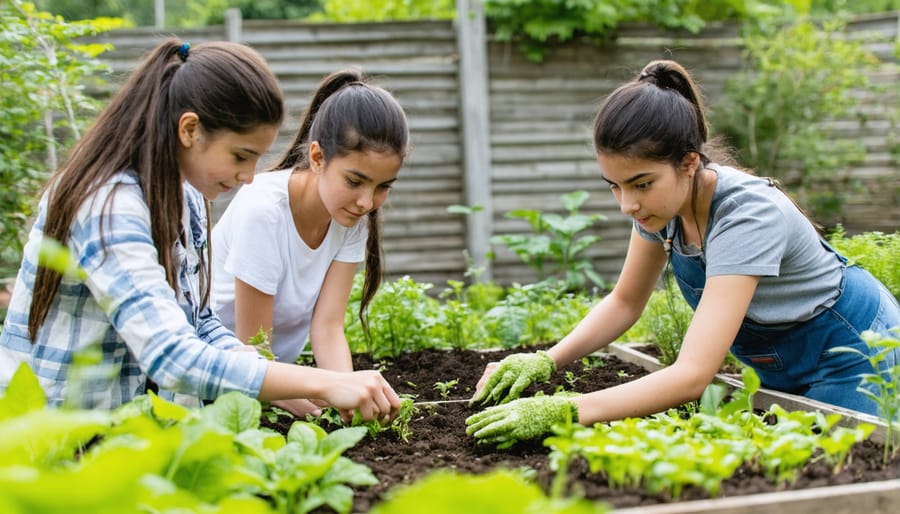
Workshop Planning and Implementation
Organizing effective workshops in your edible ecosystem teaching garden requires careful planning and a structured approach to ensure meaningful learning experiences. Start by establishing clear learning objectives that align with the growing seasons in Alberta. We recommend planning workshops at least three months in advance to account for weather variations and participant scheduling.
Begin with a needs assessment by surveying your community to identify specific interests and knowledge gaps. Common topics that resonate well include companion planting, indigenous food systems, and cold-climate permaculture techniques. Structure your workshops in three parts: theoretical introduction (30 minutes), hands-on practice (60-90 minutes), and reflection/discussion (30 minutes).
For optimal learning, limit group sizes to 12-15 participants per instructor. This allows for personalized attention and ensures everyone has adequate access to garden spaces and tools. Create detailed handouts that participants can take home, including planting calendars specific to Alberta’s growing zones and maintenance checklists.
Consider implementing a seasonal workshop series that follows natural growing cycles. Spring workshops might focus on soil preparation and seeding, while summer sessions can cover maintenance and pest management. Fall workshops are ideal for harvest techniques and preservation methods, and winter sessions can concentrate on planning and indoor growing systems.
Partner with local master gardeners, indigenous knowledge keepers, and agricultural experts to bring diverse perspectives to your programming. Document workshop outcomes through photographs and participant feedback to continuously improve your offerings. Create opportunities for past participants to return as volunteer mentors, building a sustainable community of practice.
Remember to incorporate adaptive techniques for different learning styles and physical abilities. Provide portable seating options, ensure pathways are accessible, and offer modified tools when needed. This inclusive approach helps create a welcoming environment where all community members can participate and learn effectively.
Keep your workshop content practical and relevant to local conditions, using real examples from your garden to demonstrate successful growing techniques. This hands-on approach helps participants build confidence and increases the likelihood they’ll implement these practices in their own gardens.
Community Engagement Success Stories
The Olds College Teaching Garden in central Alberta stands as a shining example of community-driven agricultural education. Since its establishment in 2018, this one-hectare ecosystem garden has engaged over 1,000 students and community members annually, teaching sustainable growing practices while demonstrating agricultural biodiversity benefits in action.
In Edmonton, the Prairie Urban Farm at the University of Alberta has transformed a previously unused plot into a thriving educational space. The garden now serves as a living laboratory where students learn about indigenous food systems, companion planting, and season extension techniques specific to Alberta’s climate. Local schools regularly participate in hands-on learning sessions, with over 15 elementary classes visiting annually.
The Medicine Hat Community Garden Network showcases how multiple small-scale teaching gardens can create significant impact. Their network of six interconnected gardens has helped educate more than 500 families about food sovereignty and sustainable growing practices. Their innovative “Garden Buddy” program pairs experienced gardeners with newcomers, fostering knowledge sharing and community connections.
Perhaps most inspiring is the story of Lacombe’s Edible Forest project. Started by a small group of passionate community members in 2019, this food forest now boasts over 75 species of edible plants and has become a model for climate-resilient agriculture. The project hosts monthly workshops during growing season, teaching everything from soil health to food preservation techniques.
These success stories demonstrate how teaching gardens serve as powerful tools for community education and engagement. They’ve proven particularly valuable for new farmers seeking hands-on experience and established producers looking to diversify their operations. The documented success of these initiatives has inspired similar projects across Alberta, creating a growing network of educational food spaces.
Edible ecosystem teaching gardens represent a powerful opportunity for Alberta’s agricultural community to bridge the gap between traditional farming practices and sustainable food production. Through these living laboratories, we’ve seen remarkable successes in educating the next generation of farmers while creating resilient, productive growing spaces that benefit both people and the environment.
The benefits extend far beyond the garden beds themselves. These spaces foster community connections, provide hands-on learning experiences, and demonstrate how ecological principles can be applied to food production in our unique climate. From school groups learning about native pollinators to experienced farmers discovering new companion planting techniques, these gardens serve as invaluable resources for agricultural education and innovation.
As we look to the future of farming in Alberta, implementing edible ecosystem teaching gardens in more communities can help build food security, environmental stewardship, and agricultural literacy. Whether you’re a farmer looking to diversify your operation, an educator seeking to create outdoor learning spaces, or a community leader interested in sustainable food systems, these gardens offer practical solutions that align with our agricultural heritage while embracing modern ecological understanding.
By starting small and growing thoughtfully, any community can establish these educational spaces. The investment in time and resources today will yield returns for generations to come, creating lasting positive impacts on our local food systems and agricultural knowledge base.


